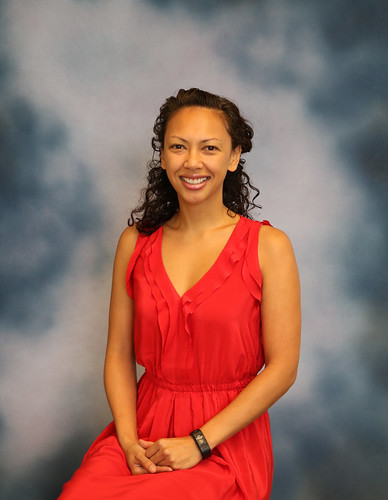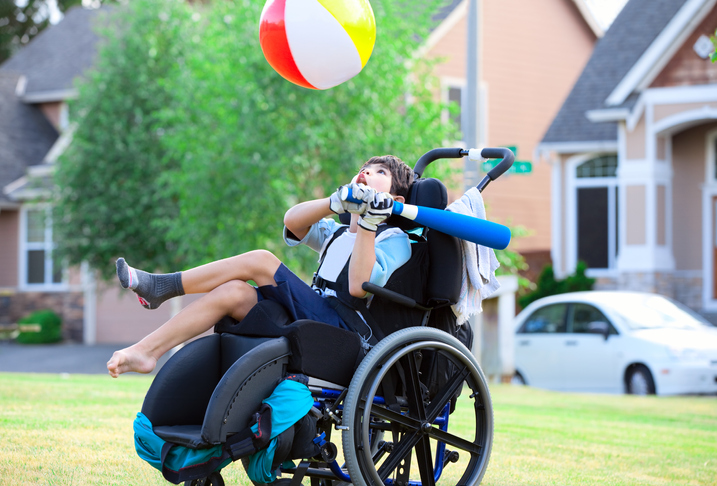Kinesiology professor highlights ways to keep kids, adults with disabilities active this summer in wake of COVID-19 pandemic
Article body
Melissa Pangelinan, an assistant professor in Auburn University’s School of Kinesiology, is the director of the Pediatric Movement and Physical Activity Lab. The lab uses state-of-the-art brain and body imaging, as well as neurocognitive and movement assessments, to better understand how movement ability and physical activity participation affect brain and motor development in children, adolescents and adults with and without developmental disabilities. The goal of her research is to develop age-appropriate interventions that will promote motor competence and physical activity participation, which will in turn impact the long-term development of brain and physical health in those with and without movement difficulties.
Below, Dr. Pangelinan offers tips for how parents and caregivers of individuals with disabilities can keep their child or loved one active in the wake of the COVID-19 pandemic.
How has COVID-19 pandemic affected people with disabilities, and how has it amplified the obstacles they deal with daily?
Parents and caregivers of individuals with developmental disabilities experience many barriers to helping their child or loved one achieve the recommended amount of physical activity. With COVID-19, the situation is even harder, as many adapted sports programs are cancelled and adapted physical education is put on hold until the next school year. Often, these types of programs are the only available with coaches/teachers/staff that are trained to work with individuals with disabilities (i.e., a typical karate or gymnastics class might not have trained staff).
At-home physical activity can be difficult to attain, especially for individuals with poor motor skills and those with significant behavioral difficulties (e.g., poor receptive or expressive communication, refusing to do new activities, poor attention, elopers).
What are some recommendations you have for at-home activities that can be easily administered by parents/caregivers?
Create a visual schedule that includes physical activities. We use visual schedules in all of our adapted physical activity programs. They have pictures or simple words that help explain the order of activities. Our picture schedules are laminated and have check boxes so that when the activity is completed the individual checks it off and knows to move to the next activity. The picture schedule can get wiped down at the end of the day and reused. Visual schedule really help smooth transitions from one activity to another and increase task completion. Parents and caregivers can download simple pictures/icons for free using flaticon.com and similar websites.
A simple schedule might look like this:
9 a.m. – Wake up and stretch
9:15 a.m. – Brush teeth and change clothes
9:30 a.m. – Eat a healthy breakfast
10 a.m. – Learn something new
11 a.m. – Dance party!
11:30 a.m. – Eat a healthy lunch
What else do you recommend to have the best success?
Let your child pick the physical activities. Having a limited number of choices (this OR that) helps your child feel like he/she has control and help him/her to want to complete the activity. Some easy at home activities include going on walks/hikes, watching YouTube exercise, yoga, or dance videos (many are made for children), creating obstacle courses with any materials around the house (chalk, balloons, pool noodles, sheets, pillows, rope, furniture, etc.), jumping on a trampoline (if you have one), or going to the pool (if he/she can swim). See #4 below for YouTube links and other videos.
Make physical activity a priority for both you and your child. Physical activity is associated with many physical and mental health benefits, including better sleep (which affects both physical and mental health!). In fact, our research has found that children with Autism Spectrum Disorder need to EXCEED the recommended 60 minutes of physical activity a day to impact sleep quality. To make this a goal that can be achieved, physical activity can be broken into shorter bouts (e.g., 15-minute increments done multiple times a day). In addition to improving sleep, physical activity is also associated with reduced stress. This is particularly relevant to parents of anxious children (e.g., some children on the Autism spectrum) as well as for parents! Many caretakers of a child or loved one with a disability experience chronic, high levels of stress. Being physically active with your child or loved one for short bouts throughout the day may reduce caretaker stress.
Use video models. Many individuals with disabilities benefit from watching videos to learn and practice new movements. And, often videos are more engaging and predictable. My lab, the Pediatric Movement and Physical Activity Lab, posts adapted exercise videos for individuals with disabilities every Friday throughout the summer (Fun Fitness Fridays). Please follow us on Facebook to get access to these videos @aupedmov.
What resources do parents and caregivers have to help them along the way?
There are many high-quality exercise videos that have been created for individuals with disabilities.
Special Olympics has several playlists of exercise, sport and motor development.
–School of Strength (for adolescents and adults)
–Special Olympics Young Athletes (for children 3 and older)
The National Center for Health, Physical Activity and Disability:
Auburn University is a nationally ranked land grant institution recognized for its commitment to world-class scholarship, interdisciplinary research with an elite, top-tier Carnegie R1 classification, life-changing outreach with Carnegie’s Community Engagement designation and an undergraduate education experience second to none. Auburn is home to more than 30,000 students, and its faculty and research partners collaborate to develop and deliver meaningful scholarship, science and technology-based advancements that meet pressing regional, national and global needs. Auburn’s commitment to active student engagement, professional success and public/private partnership drives a growing reputation for outreach and extension that delivers broad economic, health and societal impact.






